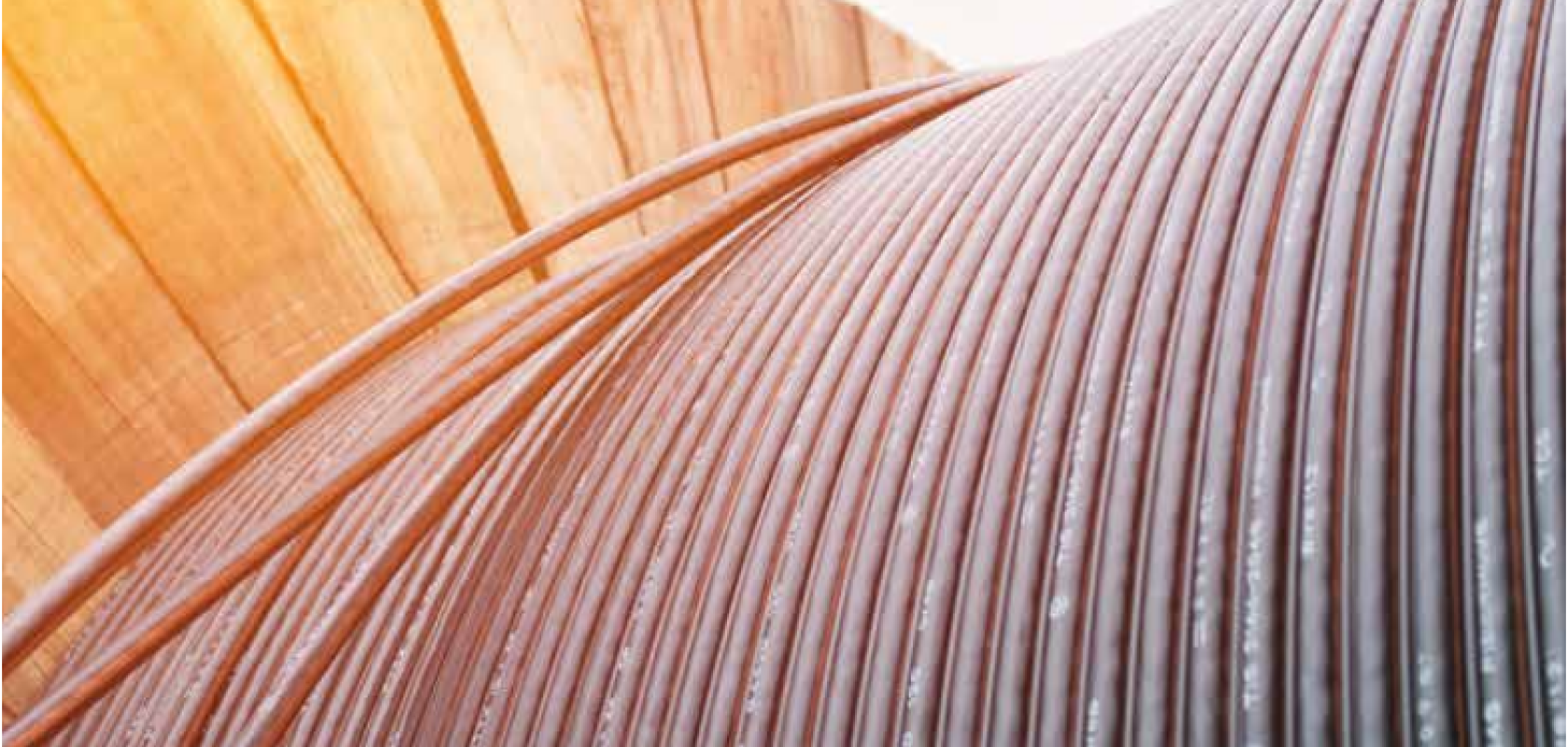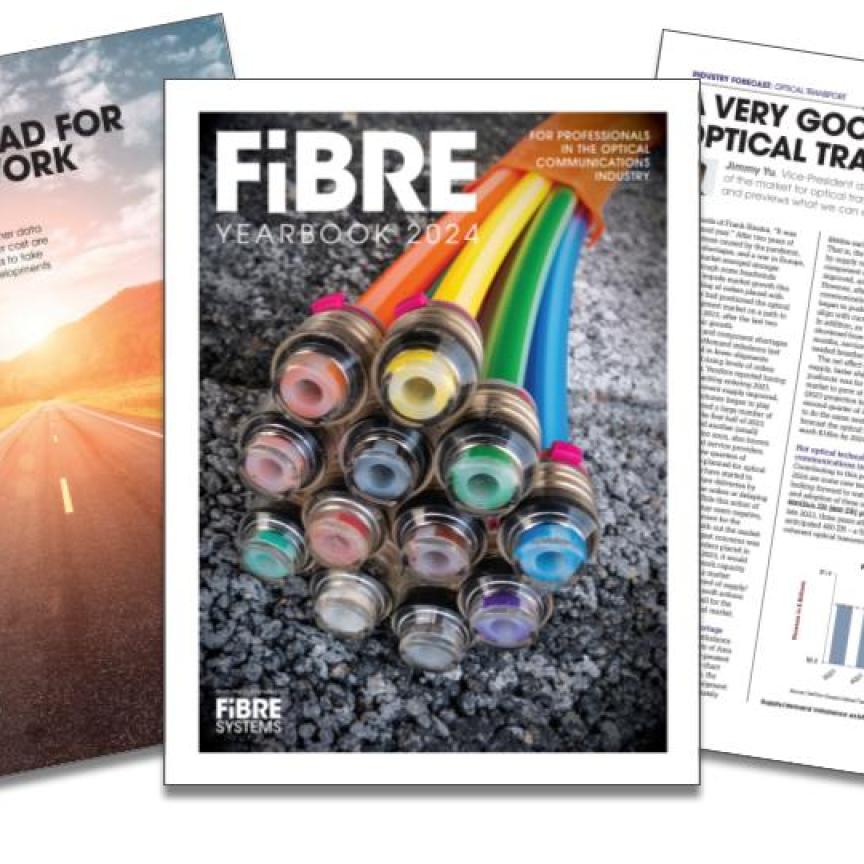While the Covid-19 crisis clearly impacted infrastructure deployment in Europe in 2020, it also undoubtedly reinforced operators’ mid-term FTTH ambitions. That’s director general at the FTTH Council Europe Vincent Garnier’s belief. The council has produced its latest market forecasts – taking into account the pandemic’s impact – due to be published at the upcoming FTTH virtual conference.
He gave a glimpse of what to expect: ‘This data shows an acceleration of FTTH deployments, especially in Western Europe. The impact on take-up is even more striking. According to our report, the pandemic has significantly increased end-users’ interest for ultra-fast and reliable networks, and our figures forecast a 14 per cent growth in subscribers by 2026 compared to our numbers before the pandemic.’
Keep committed
For Garnier, the crisis represents a challenge but also an opportunity to speed up the digital transformation of our economy and society. ‘A lot of progress has been made, in terms of deployment,’ he said, ‘and we have noticed a strong political commitment with the new European Electronic Communication Code (EECC) towards fostering the deployment and take-up of very high capacity networks.’
However, he noted, there is still a long way to go to reach ubiquitous full-fibre connectivity. The penetration rate (FTTH/B subscriptions/households) is currently at 17.1 per cent in the EU28, according to the latest Market Panorama, with some countries at less than 5 per cent.

‘Therefore,’ said Garnier, ‘it is of utmost importance to ensure that the regulatory framework (the EECC) is complemented by practical measures aimed at accelerating network rollouts and removing the roadblocks to fibre deployments. Some of them are: cutting red tape and hurdles preventing efficient and swift fibre deployment such as delays in permit granting, lack of efficient dispute resolution mechanism, lack of synergies when digging. This entails a revision of the Broadband Cost Reduction Directive (BCRD) to make it more efficient and compatible with the objectives of the EECC.’
The council’s director general also pointed out that co-ordinated network build of 5G and FTTH networks could prove to be a new and significant source of cost savings that could be realised via the revision of the BCRD. ‘We encourage all policy-makers to look into favouring synergies between fibre and 5G deployments, to decrease the overall cost of deployments,’ he said.
‘The FTTH Council Europe produced a study quantifying the potential cost savings which could be made by building a converged 5G/fibre network. We will release an update at the FTTH Conference considering the realistic scenario of deploying an FTTH network first, intended to be 5G-ready, but without knowing the exact future locations and fibre needs for the 5G network.’
Next generation networks
Garnier feels it is important to remember that the infrastructure deployed today will serve for the next 30 years, and should be able to cope with next generations’ needs.
‘Fibre is able to deliver on this ambition,’ he stated, ‘and can also enable a greener society as it is the most environmentally-friendly infrastructure. The FTTH Council Europe will continue its mission to push for ubiquitous full-fibre coverage, which in turn can contribute to a more sustainable economy.’
According to the available figures from the council, which were published in April, 41 per cent of homes are passed by former incumbent operators, and it was interesting to note that independent or alternative internet service providers (altnets) constitute the majority of the FTTH/B players, with a contribution of around 56 per cent of the total fibre expansion. So it is clear that these companies are something of a driving force when it comes to FTTH deployment.
As highlighted by Garnier, the figures for 2020 are imminent at the time of going to press, but in the meantime, a report commissioned by the Independent Networks Co-operative Association (INCA) (also undertaken by Idate) highlights that more than £1.76bn of private funding related to the independent sector was announced throughout 2019 and by September 2020. This is on top of an estimated £5.7bn of private investment-related announcements already made in the sector.
Challenge accepted
INCA CEO Malcolm Corbett welcomed the figures but warned against letting the momentum slow. ‘This level of investment is really healthy for the industry and reflects how important the challenger networks are in keeping Britain connected. It also shows that the independent sector is playing a decisive role in getting as close to the government’s 2025 gigabit coverage target as possible.
‘To ensure that this momentum builds, it’s crucial that these operators are supported, particularly in rural areas, ensuring that the government’s Outside-In funding policy succeeds, and that all communities benefit from new digital infrastructure,’ he continued.
‘The feedback we’ve had from our members during a series of webinars, is that reaching the 2025 target requires more than just funding. What is just as important, is having access to a skilled workforce, a competitive market that includes challenger operators, and directing investment at areas that need it most.’
Casting our eyes across the pond, and it seems that FTTH is gathering pace there too. The most recent study from the Fiber Broadband Association and RVA, revealed record growth in the North American fibre broadband industry.
In 2002, for example, only 50,000 US homes had access to full-fibre connectivity. The latest study puts it at nearly 1,000 times that. In the United States, fibre broadband now passes 46.5 million unique homes – about 37 per cent of total homes – and connects 20.5 million. This is a 16 per cent increase in homes passed by fibre since 2018.
Also, in the 12 months prior to the report, fibre broadband networks became available to 6.5 million additional unique homes, a record level of additions. Smaller providers accounted for 25 per cent of these.
Record levels
Full-fibre deployments to customer end- points are also at record levels, with more than 400,000 routes deployed in the 12 months leading up to the report. This increase was driven by new deployments to homes, upgrades by cable operators and the beginning of deployments to small cell sites. Canada also reached a new milestone in the period, with fibre now passing half of all Canadian homes.
Lisa R Youngers, president and CEO of the Fiber Broadband Association, said: ‘Fibre networks now support everything from 5G to Smart Cities to the Internet of Things. I’m thrilled that our association can demonstrate the progress that we have made. We will continue the work to connect the unconnected and accelerate our fibre future.’
Of course, since the report was published, the pandemic took hold, and while the Youngers acknowledged that this could be a hindrance to the ongoing improvement of US broadband, increasing penetration of optical technology is keeping people well-connected. The proportion of the country’s broadband customers have been helped through isolation by full-fibre technology, she explained. ‘Covid-19 didn’t “break” the internet and that’s primarily because of the investments made in future-proof, reliable fibre broadband,’ she said. ‘High-speed broadband access is essential for mitigating personal and economic damage from this crisis. Yet we clearly need to invest more to improve our infrastructure and bring high-speed fibre broadband access to more consumers.’
Meanwhile, more than half of the country’s broadband customers still use hybrid fibre coaxial (HFC) cable networks, which are also pushing fibre deeper, bringing it closer to customers. Such competition underscores fibre’s value, as companies strive to reach under-served communities, and overcome the obstacles to those deployments – including those posed by the pandemic.
See the value
Mike Render, principal analyst at RVA, said in our autumn edition of Fibre Systems that the crisis will increase deployment of full fibre networks ‘in the medium and long term’. Needs for teleconferencing, telemedicine and video socialisation, and live-streamed entertainment in the pandemic make better broadband’s value obvious, he argued.
Annual deployment of full-fibre reached a new record in 2019, he said. That increased the proportion of US homes passed by such networks, the highest possible theoretical number that can subscribe, to more than 36 per cent. Deployments are due to decrease later in 2020, due to a dramatic cutback in AT&T’s fibre deployment, as well as any impacts of Covid-19, before increasing again. ‘But fortunately in the US there are more than 1,000 providers, large and small, deploying FTTH,’ Render added.
Today, deploying more fibre to improve customer experience is overtaking cost reductions for legacy telephone technology, like copper-based digital subscriber line (DSL) systems. ‘Telecom providers have tried for some time to utilise existing copper cable with closer and closer fibre end-points,’ Render said. ‘Even with all these attempts to enhance DSL, this approach is quickly losing market share to better HFC systems and, of course, even better FTTH systems.’
Updated HFC systems can offer 1Gb/s download speeds, but much lower upload speeds, Render added. ‘FTTH systems usually have a 1G tier both upstream and downstream, and some already offer 10G tiers,’ he said.
Improved HFC offerings, likewise, can inspire more FTTH deployments, Render suggested. US full-fibre deployments have been driven in part by heavy competition in the US between cable providers, telephone providers and in many areas third-party competitive providers. ‘This competitive factor has been especially evident at certain times, such as Google entering the market and then spurring more deployment from traditional telecom companies,’ he said.
Down to experience
While FTTH and HFC might offer similar download speeds, the former typically claims greater reliability and lesser impact of other nearby homes accessing the network. The FBA-sponsored Broadband Experience Index, a composite measure of download speeds, upload speeds, reliability and latency, ‘shows there are verifiable differences in the consumer experience between fibre and alternative internet solutions’, Render explained.
Full-fibre’s US market share has also been boosted by how community infrastructure is organised. ‘Master planned communities, both single and multi-family, often demand fibre because it has a proven impact on real estate desirability and even monetary value,’ Render continued.
‘In some cases, municipalities are partnering with private service providers to offer service, and in others, they are successfully building and operating these systems.’
Meanwhile, full-fibre networks also promise cost benefits to broadband suppliers. ‘The need to reduce ultimate total capital expenditure (capex) and annual operational expenditures has also been a driver for deployment for network operators,’ Render explained. ‘Some private providers have taken a step approach, moving fibre closer and closer to the end-user in order to save short-term capex costs. But current FBA studies are showing operational expenditures are definitely lower for providers that make the move to an all fibre network.’
Encouraging deployment in low-population- density rural America, where costs-per-home- passed can be high, is a key strategic challenge for broadband deployment. This ‘rural digital divide’ won’t significantly impact the increasing availability of full-fibre networks until it reaches 50 per cent, according to Render. But, he added, it will become increasingly important moving toward the 90 per cent mark.
‘Rural Americans have the most online need because they are the most physically disconnected,’ said Render. ‘In fact, rural Americans are more likely to say broadband is important and to note they are more likely to use various broadband applications. Fortunately, take-rates of fibre, when available, are also high.’
The FBA has been working with the US Federal Communications Commission (FCC) and others to urge them to prioritise the importance of fibre in bridging the rural digital divide. Fortunately, authorities are intervening to help deployment at all levels, local, state and federal. ‘In the US the primary government strategy has been to reduce deployment barriers, as well as financially help support deployment in areas of low density,’ Render explained. ‘Recently, besides attempting to reduce regulation and increase the speed of action at all levels of government, the FCC has addressed the costs and delays when one private entity has to deal with another, such as obtaining permission to make fibre attachments on existing telephone poles.’


